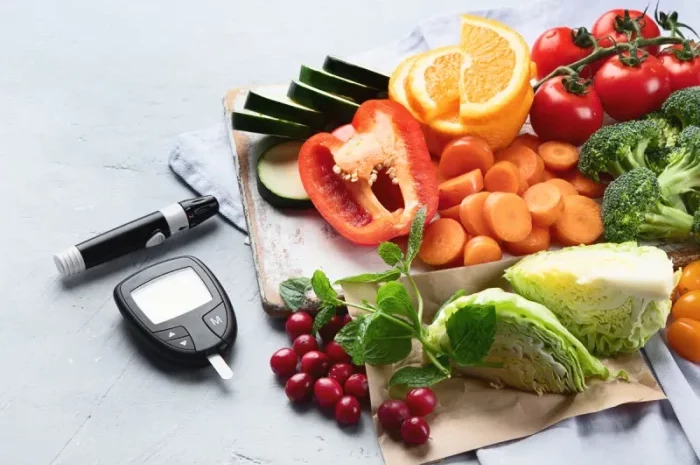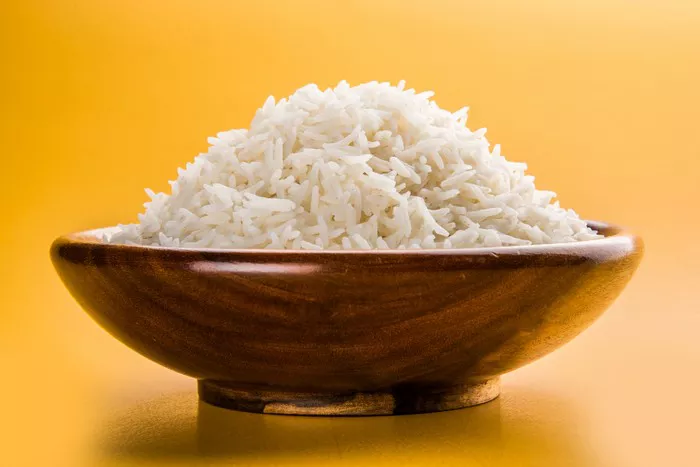Diabetes is a chronic condition that affects how your body turns food into energy. Whether you have type 1, type 2, or gestational diabetes, managing your blood sugar levels is critical to maintaining overall health. Diet plays a pivotal role in this management. This guide aims to provide detailed insights into what people with diabetes can eat to maintain balanced blood sugar levels and promote overall well-being.
Understanding Diabetes and Its Dietary Implications
Before diving into specific dietary recommendations, it is essential to understand how diabetes affects your body. Diabetes is characterized by either insufficient insulin production or the body’s inability to use insulin effectively. Insulin is a hormone produced by the pancreas that helps glucose enter cells to be used for energy.
Types of Diabetes
Type 1 Diabetes: An autoimmune condition where the body attacks insulin-producing cells in the pancreas. People with type 1 diabetes require insulin therapy.
Type 2 Diabetes: The body becomes resistant to insulin or doesn’t produce enough. It is often managed with lifestyle changes, oral medications, and sometimes insulin.
Gestational Diabetes: Occurs during pregnancy and usually disappears after childbirth, though it increases the risk of developing type 2 diabetes later in life.
Blood Sugar Levels and Diet
Blood sugar levels fluctuate based on what and when you eat. Carbohydrates have the most significant impact on blood glucose levels. Therefore, understanding carbohydrate intake is crucial for diabetes management. However, a balanced diet that includes a variety of nutrients is essential for overall health.
Key Dietary Principles for People with Diabetes
Carbohydrate Management
Carbohydrates are the primary source of energy for your body. However, they have the most significant impact on blood sugar levels. Therefore, managing carbohydrate intake is critical for people with diabetes.
Types of Carbohydrates
- Simple Carbohydrates: Found in fruits, milk, and sweeteners. These carbs are quickly absorbed and can cause rapid spikes in blood sugar.
- Complex Carbohydrates: Found in whole grains, legumes, and vegetables. These are absorbed more slowly, leading to more gradual changes in blood sugar levels.
Glycemic Index (GI)
The Glycemic Index ranks foods based on how they affect blood glucose levels. Low GI foods (55 or less) cause slower, more stable increases in blood sugar. High GI foods (70 and above) cause rapid spikes. Choosing low to moderate GI foods can help manage blood sugar levels.
Balanced Macronutrient Intake
A balanced diet includes carbohydrates, proteins, and fats. Each macronutrient affects blood sugar differently and plays a unique role in overall health.
Protein
Protein has a minimal impact on blood glucose levels and helps with satiety. Including lean proteins like chicken, fish, beans, and tofu can aid in weight management and muscle maintenance.
Fats
Healthy fats, such as those found in avocados, nuts, seeds, and olive oil, can improve heart health and provide long-lasting energy. It’s essential to limit saturated and trans fats to reduce the risk of cardiovascular disease.
Fiber-Rich Foods
Fiber, a type of carbohydrate that the body cannot digest, helps regulate blood sugar levels by slowing the absorption of sugar. It also aids in digestion and can promote feelings of fullness.
- Soluble Fiber: Found in oats, legumes, apples, and carrots, helps control blood sugar levels.
- Insoluble Fiber: Found in whole grains, nuts, and vegetables, aids in digestion and prevents constipation.
Portion Control
Eating the right portion sizes is crucial for managing blood sugar levels. Overeating, even healthy foods, can lead to weight gain and increased blood glucose levels.
Regular Meal Times
Eating at regular intervals helps maintain steady blood sugar levels. Skipping meals or eating too infrequently can lead to spikes and drops in blood sugar.
Recommended Foods for People with Diabetes
Non-Starchy Vegetables
Non-starchy vegetables are low in carbohydrates and calories, making them an excellent choice for people with diabetes. They are rich in vitamins, minerals, and fiber.
- Examples: Spinach, kale, broccoli, cauliflower, bell peppers, cucumbers, and tomatoes.
Whole Grains
Whole grains have more fiber and nutrients compared to refined grains. They have a lower GI and help manage blood sugar levels.
- Examples: Whole wheat, brown rice, quinoa, barley, and oats.
Lean Proteins
Lean proteins are essential for maintaining muscle mass and overall health. They have minimal impact on blood sugar levels and help with satiety.
- Examples: Chicken breast, turkey, fish, tofu, legumes, and low-fat dairy.
Healthy Fats
Healthy fats are crucial for heart health and provide a slow release of energy. They also help absorb fat-soluble vitamins.
- Examples: Avocados, olive oil, nuts, seeds, and fatty fish like salmon.
Fruits
Fruits contain natural sugars but also provide fiber, vitamins, and antioxidants. Choosing whole fruits over fruit juices can help manage blood sugar levels.
- Examples: Berries, apples, pears, and citrus fruits.
Legumes
Legumes are rich in protein, fiber, and complex carbohydrates. They have a low GI and are an excellent source of nutrients.
- Examples: Lentils, chickpeas, black beans, and kidney beans.
Dairy or Dairy Alternatives
Low-fat or fat-free dairy products provide calcium, vitamin D, and protein. For those who are lactose intolerant, fortified plant-based alternatives like almond milk or soy milk can be a good option.
- Examples: Greek yogurt, cottage cheese, and milk.
Foods to Limit or Avoid
Sugary Foods and Beverages
Foods high in added sugars can cause rapid spikes in blood sugar levels. These include candies, baked goods, sodas, and sweetened beverages.
Refined Carbohydrates
Refined carbohydrates, such as white bread, white rice, and pastries, have a high GI and can cause rapid increases in blood sugar levels.
Saturated and Trans Fats
These unhealthy fats can increase the risk of cardiovascular disease, which people with diabetes are already at higher risk for.
- Sources: Fried foods, processed snacks, margarine, and fatty cuts of meat.
High-Sodium Foods
High sodium intake can lead to high blood pressure, which is a risk factor for heart disease and stroke.
- Sources: Processed foods, canned soups, fast foods, and salty snacks.
Special Considerations
Alcohol Consumption
Alcohol can affect blood sugar levels. It is important for people with diabetes to consume alcohol in moderation and be aware of its effects on their blood sugar levels. It is advisable to drink alcohol with a meal and to monitor blood sugar levels closely.
Meal Planning and Preparation
Planning meals ahead of time can help ensure balanced nutrition and prevent the temptation to choose unhealthy options. Preparing meals at home allows for better control over ingredients and portion sizes.
Reading Food Labels
Understanding food labels can help make informed choices. Pay attention to serving sizes, total carbohydrates, fiber content, and added sugars.
Working with Healthcare Providers
It is essential to work with healthcare providers, including dietitians, endocrinologists, and diabetes educators, to create a personalized meal plan that meets individual needs and preferences.
Sample Meal Plan for People with Diabetes
Breakfast
- Option 1: Greek yogurt with fresh berries and a sprinkle of chia seeds.
- Option 2: Scrambled eggs with spinach and whole-grain toast.
- Option 3: Oatmeal topped with sliced almonds and a small apple.
Lunch
- Option 1: Grilled chicken salad with mixed greens, cherry tomatoes, cucumber, and a vinaigrette dressing.
- Option 2: Quinoa and black bean bowl with avocado and salsa.
- Option 3: Turkey and vegetable stir-fry with brown rice.
Snack
- Option 1: A handful of nuts.
- Option 2: Carrot sticks with hummus.
- Option 3: An apple with a tablespoon of almond butter.
Dinner
- Option 1: Baked salmon with steamed broccoli and a quinoa side.
- Option 2: Lentil soup with a side salad.
- Option 3: Grilled tofu with mixed vegetable stir-fry and brown rice.
Dessert
- Option 1: A small bowl of mixed berries.
- Option 2: A piece of dark chocolate (70% cocoa or higher).
- Option 3: A baked apple with cinnamon.
Conclusion
Managing diabetes through diet involves understanding the impact of different foods on blood sugar levels and making informed choices. A balanced diet rich in non-starchy vegetables, whole grains, lean proteins, healthy fats, and fiber can help maintain stable blood glucose levels and promote overall health. Limiting sugary foods, refined carbohydrates, unhealthy fats, and high-sodium foods is also crucial. Regular meal times, portion control, and collaboration with healthcare providers are essential components of effective diabetes management. By following these guidelines, people with diabetes can enjoy a varied and nutritious diet while maintaining their health and well-being.
Related topics:
Why Does Blood Sugar Rise Without Eating?

























